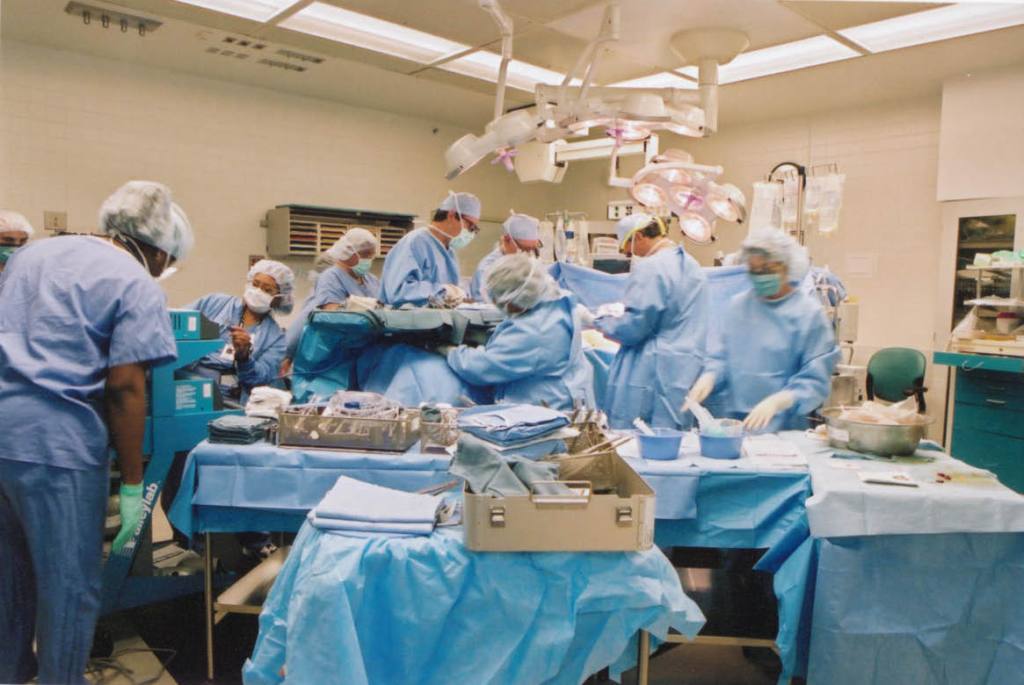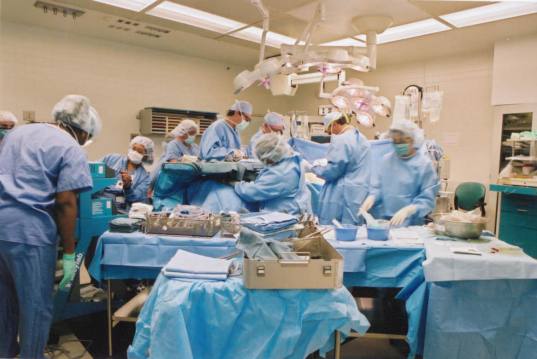Susan Honea didn’t expect to live beyond her 30s.
She was diagnosed at age 29 with primary biliary cirrhosis, a chronic disease that slowly destroys the medium-sized bile ducts in the liver.
Honea, a Hiram resident, was put on a liver transplant list last year, and she got the transplant at Piedmont Atlanta Hospital in March. “You don’t realize how bad you were until you get one,’’ she said. “I didn’t think I would make it to my 40th birthday.’’
Though she got an opportunity for a normal life, Honea fears that some other Georgians won’t. She believes a proposed federal change to liver transplant distribution policies, if it had already been in effect, could have prevented her from getting the lifesaving operation.
The United Network for Organ Sharing (UNOS), the organization that manages the nation’s organ transplant system under contract with the federal government, is considering changes to the liver transplant districts in the country.
The nation is currently divided into 11 transplant regions that have wide variations in patients and available organs. Livers generally are allocated within each locality or region.
Putting Georgia into a new district would change the calculus of whether a patient here gets a transplant.
Don’t meddle with a good thing?
Right now, the region that includes Georgia works efficiently in terms of organ donations and distribution, Emory and Piedmont transplant chiefs contend.
“Organ donation is working quite well in Georgia,’’ said Dr. Stuart Knechtle, director of liver transplantation at Emory University Hospital, and chief of transplant services at Children’s Healthcare of Atlanta.
Dr. Mark Johnson, program director of Piedmont Transplant Institute, said other regions have donor rates that are not as strong as Georgia’s.
But a remapping could put Georgia in a region of Northeastern states.
A bipartisan group of 11 Georgia congressmen signed an April letter to the Health Resources and Services Administration saying the idea of remapping the regional set-up for liver transplant allocation would hurt the state. Redistricting, the congressmen argued, “would reduce the number of liver transplants performed in Georgia by 25 percent, reducing access to this lifesaving procedure for Georgians.”
It would also disproportionately harm minorities and poorer patients in Georgia and the Southeast, the congressmen said.
The letter asked Mary Wakefield, the HRSA administrator, to put a hold on the process by UNOS.
Rep. Lynn Westmoreland (R-Ga.) told GHN in a statement, “Including Georgia among Northeastern states proposes not only a higher health risk to patients, but the survival time for the liver. In order to keep costs, health risks, and travel time low for Georgia and the surrounding regions, remapping needs to be considered with the needs of the patients as a priority.”
Determining the greater need
The current transplantation process is based largely on severity of disease. Because the number of people waiting for new livers far exceeds the number of livers available, a transplant is reserved for a critically ill patient. Thousands of people nationally are waiting for a liver transplant at any given time, and each year hundreds die before receiving one.
The purpose of remapping would be to level out the geographic disparities and equalize the MELD scores, a measure of severity of liver disease. That system is a numerical scale used for adult liver transplant candidates. The range is from 6 (less ill) to 40 (gravely ill).
The organs generally go to the sickest (by MELD score) within a region.
The Associated Press reported last year that UNOS figures show that in three regions stretching from Michigan and Ohio down to Florida (including Georgia), adults receiving new livers over the past two years had median MELD scores of 22 to 23.
But in the region that includes California, recipients were far sicker, with a median score of 33, AP reported. Almost as high were regions that include New York, the Dakotas and Illinois.
(Last year, UNOS made one change to the way livers are allocated. The policy change, called Share 35, offers livers broadly to people on the wait list with MELD scores of 35 or higher.)
Dr. David C. Mulligan, chairman of the UNOS Liver and Intestinal Organ Transplantation Committee, noted in April that there are significant geographic disparities in the current system.
“Our committee is reviewing alternate distribution methods to both increase the number of lives saved through liver transplantation, and decrease overall variation in [MELD] scores at which candidates receive a transplant opportunity,” Mulligan said. “Statistical modeling strongly suggests these optimized maps would result in more lives saved overall and reduced variation in the [MELD] scores at transplant.’’
A UNOS spokeswoman said the earliest time an actual proposal for a change would go out for public comment would be spring 2015.
Demographics and geography
More than 300 Georgians are currently waiting for a liver transplant. Emory and Piedmont, along with Children’s Healthcare of Atlanta, perform a total of more than 250 a year.
Under the current set-up, the wait time in Georgia for a liver transplant is less than six months, Piedmont’s Johnson said. And he added that Georgia is now a net exporter of livers, sending 10 to 12 to other states each year.
“Using wait-list mortality as sole metric for reallocating a scarce gift is not maximizing the value of that gift to society, nor is always transplanting to the sickest first,” Johnson added. “Some patients are too sick to survive even one year after transplantation, and that takes away from the donor’s wishes of giving the gift of life.”
The proposed remapping is “too shortsighted and simplistic a fix to the inequities across the country,’’ Johnson said.
Emory’s Knechtle pointed out that Georgia has a higher disease burden than other states. “We have a poor population and poor access to health care,’’ he said.
A high percentage of donated livers in Georgia are from African-Americans, Knechtle says. With a remapping, “you’re going to take from a poor, African-American population and send to a wealthier, whiter population. I’d have a hard time with that.”
Travel times for a donated organ is also a factor, he said. If transported, “the liver will be older by the time it gets there. Ideally, it should be transplanted less than eight hours’’ after the donation, Knechtle said.





